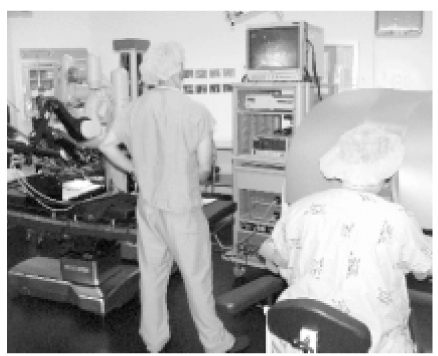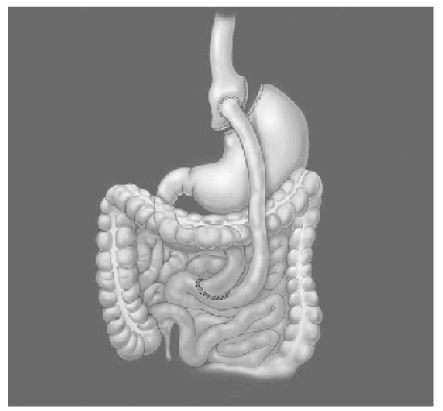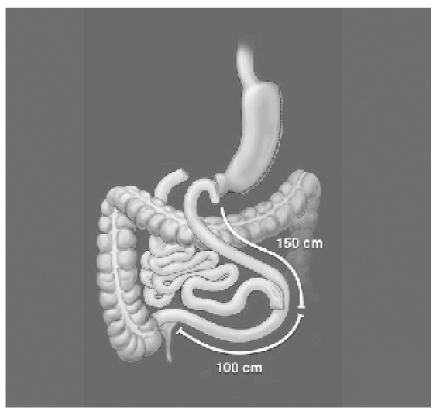J Korean Med Assoc.
2003 Aug;46(8):708-714. 10.5124/jkma.2003.46.8.708.
Robot Assisted Laparoscopic Surgery and Bariatric Surgery
- Affiliations
-
- 1Minimally Invasive Surgery Center, Seoul, Korea. lizk@orgio.net
- KMID: 2183110
- DOI: http://doi.org/10.5124/jkma.2003.46.8.708
Abstract
- Laparoscopic operations are a primary component of general surgery. Opportunities to perform laparoscopic operations currently vary widely between surgical training programs. As utilization of minimal access procedures increases in the future, doctors will more readily learn the skills necessary to safely accomplish these operations. Recently robotic surgery has been developed amazingly, and now tele-robotic, laparoscopic abdominal surgery is feasible with its initial outcomes being compatible with those obtained from traditional laparoscopic surgery. Therefore, the tele-robotic and robotic surgical systems are believed to overcome some of the limitations inherent to the traditional laparoscopic surgeries and to increase the number of surgeons who could perform complex laparoscopies in the future. Laparoscopic bariatric surgery is a well known procedure in western countries. It appears as effective as other laparoscopic operations and has been shown to provide excellent long term outcomes. Therefore I am trying to introduce bariatric surgery which is not much familiar in Asian countries.
Figure
Reference
-
1. Kim WW, Gagner M. Training and credentialing in laparoscopic surgery. Laparoscopic Surgery. 2003. 8:McGhrill company;53–56.2. Kim WW, Gagner M, Fukuyama S, Hung TI, Biertho L, Gentileschi P, et al. Laparoscopic harvesting of small bowel graft for small bowel transplantation. Surgical Endoscopy. 2002. 16:1786–1789.
Article3. Kim WW, Chon JY, Chun SW, Jeon HM, Kim EK. Laparoscopic procedure in the third trimester of pregnancy. Surgical Endoscopy. 2000. 14:510.4. Ballantyne GH. Robotic surgery, telerobotic surgery, telepresence, and telementoring. Surg Endosc. 2002. 16:1389–1402.
Article5. Boyd WD, Desai ND, Kiaii B. A comparision of robotic-assisted versus mannually constructed endoscopic coronary anastomosis. Ann Thorac Surg. 2000. 70:839–843.6. Rassweiler J, Frade T. Robotics, telesurgery and telementoring their position in mordern uroloical laparoscopy. Arch Esp Uro. 2002. 55:610–628.7. Kim WW, Jeon HM, Park SC, Lee SK, Chun SW, Kim EK. Comparison of immune preservation between CO2 pneumoperitoneum and gasless abdominal lift laparoscopy. Journal of Society of Laparo-endoscopic Surgeon. 2002. 6:11–15.8. Nguyen NT, Ho HS, Palmer L, Wolfe BM. A comparative study of laparoscopic versus open gastric bypass for morbid obesity. J Am Coll Surg. 2000. 191:149–157.9. Ren CJ, Patterson E, Gagner M. Early result of laparoscopic biliopancreatic diversion with duodenal switch : A case series of 40 consecutive patients. Obesity Surgery. 2000. 10:514–523.
Article10. Cummings DE, Weigle DS, Cottfrayo R, Frayo RS, Breen PA, Ma MR, Purnel JQ, et al. Plasma ghrelin levels after dietinduced weight loss or gastric bypass surgery. N Engl J Med. 2002. 346:1623–1630.
Article11. Sugerman HJ. Bariatric surgery for severe obesity. J Assoc Acad Minor Phys. 2001. 12:129–136.12. Kim WW, Gagner M, Kini S, Quinn T, Herron D, Pomp A, et al. Laparoscopic versus Open Biliopancreatic Diversion with Duodenal Switch : A comparative study. J Gastrointest Surg. 2003. 7:552–557.
Article13. Kim WW, Michel Gagner, Laurent Biertho, Anne Waage, Brian Jacob. Taking posterior rectus sheath laparoscopically to reinforcement the gastrojejunostomy in laparoscopic Roux-en-Y gastric bypass. Obes Surg. 2003. 13(2):258–262.
Article





